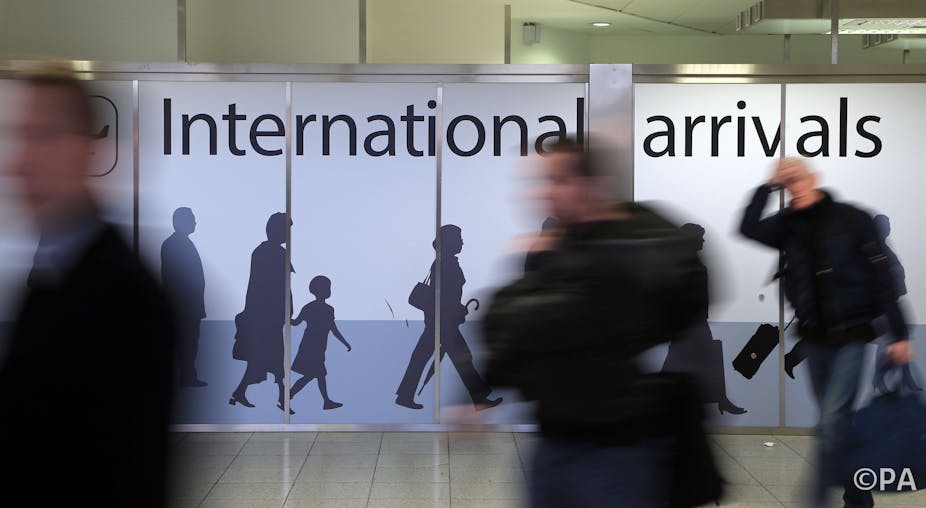The latest figures on immigration into the UK make for difficult reading for the government – and particularly for the Conservative Party.
Since coming to power Conservative ministers have constantly trumpeted their aim of reducing net migration to the tens of thousands by the end of this parliament. The new findings show that with only a couple of months to go, immigration has been increasing.
The Liberal Democrats have attempted to put distance between them and the tens-of-thousands target of their coalition partners, which has never seemed even close to being achieved, but at least until now there appeared to be some small room for manoeuvre – even hopes of a qualified success.
Since the UK is limited in its ability to control the number of people coming in from the EU, David Cameron had argued that policy should be judged on curbing immigration from outside the EU – which had shown definite decreases since 2011.
But the figures released on February 26 (the last to come out before the election) show it is on the rise again, blowing a hole in this narrative.

There seems to have been a spike in both EU and non-EU immigration. Net long-term migration to the UK was estimated to be 298,000 for the year ending September 2014 – significantly higher than the 210,000 estimated for the previous 12 months. The increase in EU citizens, meanwhile, was 43,000, and the increase for non-EU citizens was 49,000.
Did anyone win?
We all lose by playing the numbers game. This is not only because talking about aggregate numbers means we miss any sense of the human lives behind the statistics and fuel the fires for people who want to spread fear about immigration. A focus on headline figures also seems to make for bad policy. It ends up looking like bad strategy when you fail to meet your target.
What’s more, in the rush to make promises and change rules there seems to have been very little room for discussion about impacts for immigrants. Despite the significant problem of migrants being exploited in the UK labour market, the debate always seems to turn on getting tough on those who abuse the system.
Rather than acting on any recognisable set of principles, it looks as though the government has been forced down the path of least resistance in attempting to meet its self-imposed net migration target. Unfortunately, this is not necessarily the path of least harm.
Asylum figures remain low, for example, but the UK’s inhospitality comes at a terrible cost. The crisis in Syria results in more than 3m displaced people, but Britain has taken in only a handful. There is also harm for families kept apart because they don’t earn the £18,600 they need to qualify for a spousal visa for their significant other.
Then there is the economic harm caused by the difficulties universities face when trying to bring in international students who could contribute to the UK economy with the knowledge and training they pick up here.
Ironically opposition politicians have promised to remove students from immigration figures – a move that would reduce net migration numbers at a stroke – but this is not something Conservative ministers have been willing to do.
Presumably the fear of being accused of massaging the figures is what puts the government off deploying such a simple solution to its predicament. By setting immigration up as a numbers game, it really can’t win, and neither can the increasing numbers of people caught up in the system both in, and outside, the UK.

